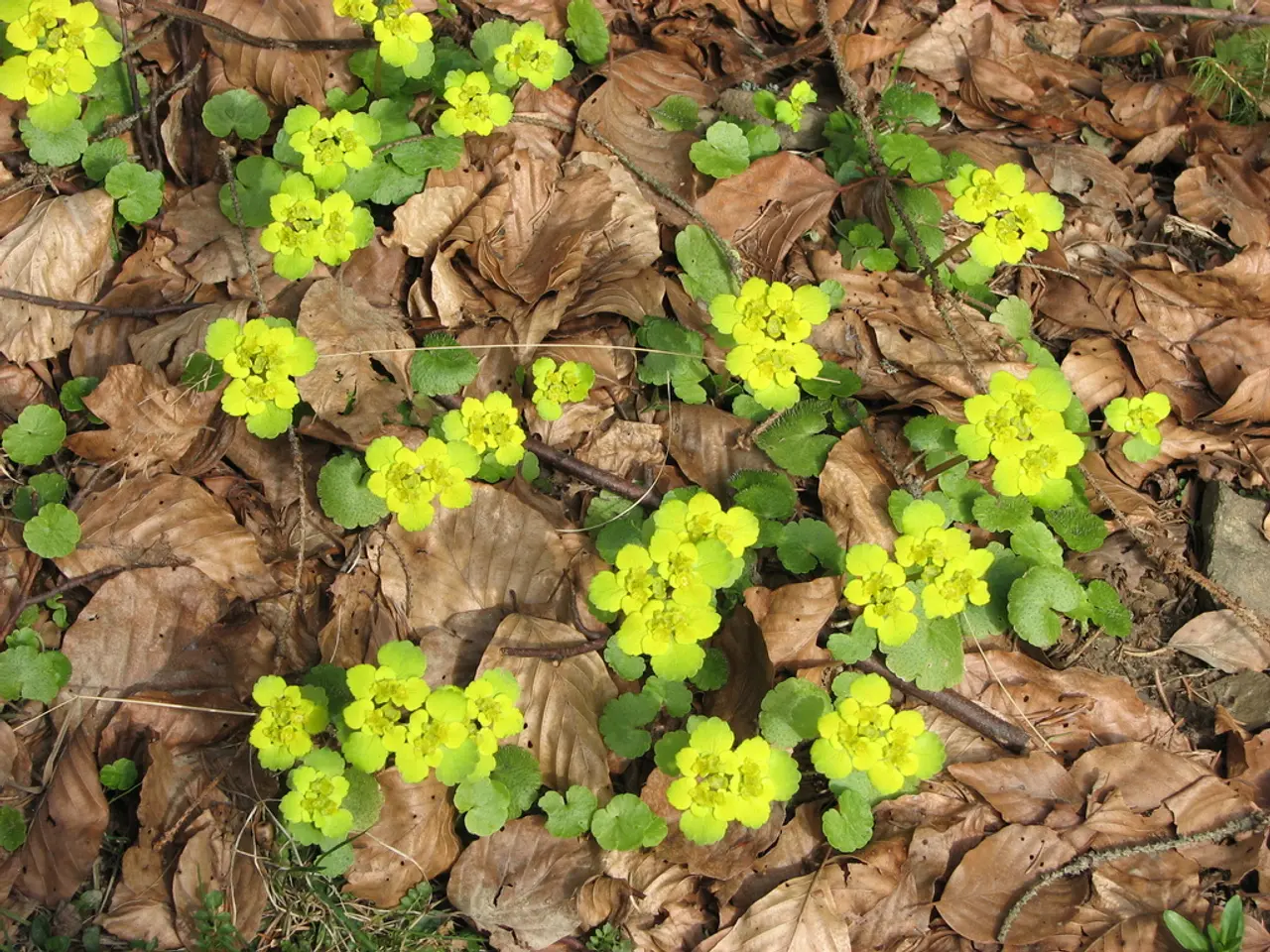Floods cause distress among durian farmers in Daak Laak region
Heavy Rains in Đắk Lắk Province Pose Challenges to Durian Quality
Prolonged rains in the southern province of Đắk Lắk are causing concerns among durian growers, as the heavy precipitation is delaying fruit ripening and increasing risks of quality decline[1][2].
The wet weather conditions are not ideal for durian trees, which require dry and sunny conditions to ripen evenly[1]. Heavy rains can negatively affect the sweetness and texture of the fruits[1]. Many farmers in the province are experiencing lower yields due to the unfavourable weather[2].
Ama Buk, a farmer in Cuôr Đăng Commune, has 130 durian trees and is anxious about the bad weather. During the flowering stage, Ama Buk's orchard faced challenges, with the pistils being damaged, causing flowers to drop, and leading to a low fruit-setting rate[1]. High humidity caused by prolonged rains is also ideal for fungal growth, which could cause the durian fruits to rot[1].
To combat these challenges, several measures are being implemented:
- Intensive orchard management: Farmers are increasing efforts in pruning, drainage, and pest prevention during critical care periods to maintain fruit quality despite adverse weather[1].
- Training and technical support: The Đắk Lắk Durian Association is collaborating with scientists and relevant agencies to hold training sessions, standardize farming areas, and provide technical guidance on sustainable farming models[2].
- Monitoring and quality control: The province’s Sub-Department of Cultivation and Plant Protection is monitoring crop quality, and the Agriculture Extension Centre is advising farmers on best practices to enhance durability and export standards[2].
- Supply chain strengthening: The Rural Development Sub-department is collaborating with cooperatives and farmer groups to improve linkages in production, processing, and export, ensuring traceability and meeting stricter international requirements[1][2].
These measures are part of the province’s broader push toward “green lane” export strategies emphasizing safe, traceable supply chains and sustainable production to maintain competitiveness in global markets with tightening quality checkpoints[1].
Lê Anh Trung, Chairman of the Đắk Lắk Durian Association, has stated that import markets are raising quality requirements and exporters are becoming more stringent[1]. Y Tiếp Niếp, chairman of the Farmers Association of Ea Tul Commune, has reported that some durian orchards are seeing lower yields[2]. To combat the low fruit-setting rate, Ama Buk had to use more fertilisers to induce new blossoms[1].
The Đắk Lắk Durian Association is taking steps to improve the quality of durian fruits in response to stricter quality requirements from import markets[1]. The Rural Development Sub-department is also collaborating with cooperatives and farmer groups to strengthen supply chain linkages in durian production, processing, and export[1][2].
In summary, while prolonged rains disrupt durian quality in Đắk Lắk by delaying ripening and risking quality decline, a combination of advanced orchard care, expert training, regulatory monitoring, and supply chain coordination is employed to uphold and improve durian production quality in the province[1][2].
References: [1] VnExpress International. (2022, April 1). Prolonged rains in Đắk Lắk Province pose challenges to durian quality. Retrieved from https://vneconomy.vn/prolonged-rains-in-dak-lak-province-pose-challenges-to-durian-quality-5166332.html [2] VnExpress International. (2022, April 2). Đắk Lắk farmers struggle with lower durian yields due to heavy rains. Retrieved from https://vneconomy.vn/dak-lak-farmers-struggle-with-lower-durian-yields-due-to-heavy-rains-5166330.html
- The heavy rains in Đắk Laki Province have led to concerns in the health-and-wellness sector, as the prolonged precipitation is affecting the quality of durian fruits, a popular cultural staple in the region.
- The environmental science community has highlighted that durian trees require specific weather conditions to ripen evenly, and heavy rains can negatively impact the sweetness and texture of the fruits.
- To respond to the stricter quality requirements from import markets, the Đắk Lắk Durian Association is implementing advanced AI models to predict weather patterns, helping farmers optimize their orchard management strategies and foster sustainable environmental practices.
- A concerted effort from various sectors, including climate-change research, sustainable farming, and environmental science, is necessary to ensure the future resilience of durian production in Đắk Lak, securing its cultural significance and economic value for the region.




